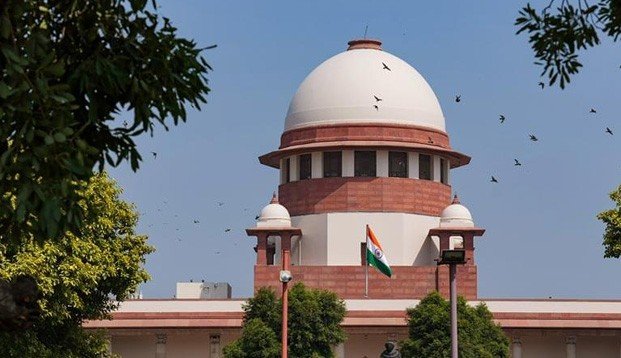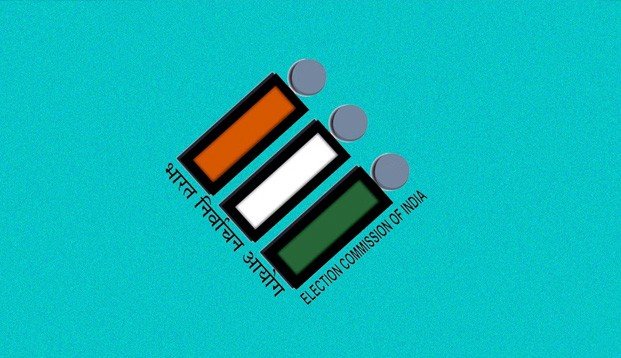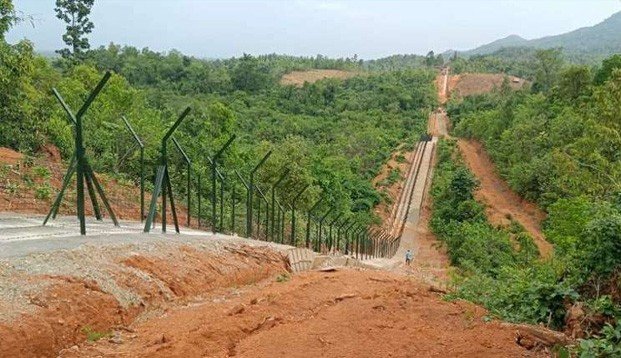7th February, 2024 (Wednesday)
| CONTENT LIST | ||
| Topics | Syllabus | |
| 1 | Zodiacal Light | GS.3: Space Science – Studies in News |
| 2 | Fiscal Autonomy & Responsibility in India | GS. 2: Indian Polity: Centre – State Relations |
| 3 | Delimitation Exercise | GS.2: Indian Polity: Elections in India |
| 4 | Constitutional Bench | GS.2: Indian Polity: Judicial Review |
| 5 | Appointment of ECs | GS.2: Indian Polity: Constitutional Bodies |
| 6 | Securing India-Myanmar Border | GS. 3: Security of India: Border Security |
ZODIACAL LIGHT
Syllabus: GS. 3: Space Science –Studies in News
Why it’s in the News: Scientists at the Physics Research Laboratory (PRL), Ahmedabad, have recently published a paper proposing a novel explanation for the origin of Zodiacal light.


About Zodiacal Light
- Zodiacal light is a faint glow in the sky caused by sunlight bouncing off tiny dust particles floating in space between planets.
- This glow becomes visible during very dark nights, far away from the lights of cities and towns.
- Interplanetary dust comprises minuscule particles of cosmic dust scattered throughout the space between planets. These particles range in size from microscopic to several millimeters.
- The ecliptic, the apparent path of the Sun across the sky throughout the year, is where Zodiacal light appears.
- When sunlight hits these dust particles, it scatters, creating the beautiful glow of Zodiacal light that we observe.
FISCAL AUTONOMY AND RESPONSIBILITY IN INDIA
Syllabus: GS. 2: Indian Polity: Centre – State Relations
Why it’s in the News: The Opposition-ruled states of Karnataka and Kerala are bringing their protest against the Centre’s alleged biased fiscal policies to the national capital, with Tamil Nadu lending its voice of support.
Fiscal Autonomy and Responsibility in India
- Constitutional Framework and Fiscal Responsibility:
- Article 293 of the Indian Constitution grants fiscal autonomy to states; limiting borrowing to within India’s borders and under state fiscal responsibility acts.
- Transactions between the Centre and states operate under the Fiscal Responsibility and Budget Management Act of 2003, aimed at ensuring fiscal equity and macroeconomic stability.
- Kerala’s Challenge:
- The Kerala government challenges recent amendments to the FRBM Act, which it argues infringe upon its fiscal autonomy. These changes reduce Kerala’s borrowing limit, prompting concerns over impending financial crises and encroachment on state legislative powers.
- Net Borrowing Limit for Kerala:
- Kerala’s normal net borrowing ceiling for FY 2023-24, as per the 15th Finance Commission’s recommendations, is set at Rs 32,442 crore, reflecting 3% of the Gross State Domestic Product (GSDP).
- 15th Finance Commission’s Recommendations:
- The Commission recommended revised borrowing limits for states due to fiscal pressures exacerbated by the Covid-19 pandemic, gradually reducing the borrowing ceiling from 5% to 3% of GSDP over the years 2021-2026.
- Fiscal Health and Kerala’s Record:
- Kerala has struggled to maintain fiscal discipline, consistently exceeding the FRBM targets, resulting in high revenue deficit-fiscal deficit ratios and increased reliance on borrowing to cover day-to-day expenses.
- Current Fiscal Challenges:
- Kerala faces a severe financial crisis, with the Chief Secretary acknowledging difficulties in funding daily operations and reports of transactions being halted due to funding shortages.
- Centre’s Response and Political Dynamics:
- The Union government has rejected Kerala’s requests for additional funds, citing violations of fiscal responsibility. Similar reductions in borrowing limits have been imposed on other states, sparking political tensions over fiscal matters.
The challenges to fiscal autonomy and responsibility in states like Kerala can strain the cooperative federalism framework in India, highlighting the need for constructive dialogue, institutional resilience, and balanced intergovernmental relations to sustain collaborative governance.
DELIMITATION EXERCISE IN INDIA
Syllabus: GS.2: Indian Polity: Elections in India
Why it’s in the News: The Myanmar junta’s diminishing control amid widespread ethnic conflict is jeopardizing India’s Kaladan Multimodal Transit Project in Rakhine state. With Rs 3,200 crore invested since its 2008 inception, the project remains unfinished
Understanding Delimitation
- Delimitation is the act of redrawing boundaries of Lok Sabha and state Assembly seats to represent changes in population.
- The main objective of delimitation is to provide equal representation to equal segments of a population.
- Authority and Process
- Delimitation is conducted by an independent Delimitation Commission, appointed by the President of India, in collaboration with the Election Commission.
- The Commission includes a retired Supreme Court judge, the Chief Election Commissioner, and State Election Commissioners, ensuring impartiality.
- The Commission’s orders are final and cannot be challenged in court. It conducts public hearings and considers objections and suggestions before finalizing constituency boundaries.
- Historical Context
- Past Exercises: Delimitation has occurred four times in India’s history, with gaps between exercises. The 2002 exercise excluded certain states due to security concerns.
- Constitutional Amendments: Amendments suspended delimitation until 2001 and later extended it to 2026 to address concerns of political representation imbalances.
- Challenges and Current Debates
- Population Growth: Uneven population growth has raised concerns about representation fairness.
- Frozen Seats: The number of seats in Lok Sabha and state Assemblies has been frozen since 1971, sparking debates on redistribution or increasing seats.
- Gender Representation: Delimitation could impact gender representation, with potential implications for women’s reservation in politics.
- International Perspectives
- US and EU Practices: Examples from the US and EU illustrate various approaches to seat redistribution and proportional representation.
- Way Forward
- Balancing Principles: A balanced approach reconciling democratic representation with federal principles is essential for fair delimitation, strengthening democratic foundations and local governance.
CONSTITUTIONAL BENCH
Syllabus: GS.2: Indian Polity: Judicial Review
Why it’s in the News: A seven-judge Constitution bench, led by Chief Justice DY Chandrachud, is currently reviewing the validity of the Punjab Scheduled Castes and Backward Classes (Reservation in Services) Act, 2006. This Act provided a 50 percent quota with ‘Valmikis’ and ‘Mazhabi Sikhs’ castes given ‘first preference’ in public jobs within the Scheduled Castes (SCs) quota.


What is a Constitution Bench?
- Article 145(3) of the Indian Constitution stipulates that any case involving a substantial question of law regarding the interpretation of the Constitution must be decided by a bench of at least five judges, termed a Constitution bench.
- Purpose:
- Constitution benches offer a comprehensive perspective on legal matters, shaping future legal directions.
- Composition:
- A Constitution bench comprises five or more judges of the Supreme Court and is formed temporarily, dissolving upon resolution of the legal question at hand.
- Formation and Scenarios:
- The Chief Justice of India has the authority to establish a Constitution bench and refer cases to it. Such benches are typically formed in four situations:
- Cases involving substantial questions of law related to constitutional interpretation.
- When the President seeks the Supreme Court’s opinion on law or fact.
- In instances of conflicting judgments between two- or three-judge benches.
- When a three-judge bench’s ruling differs from a previous three-judge bench’s decision on an issue.
- The Chief Justice of India has the authority to establish a Constitution bench and refer cases to it. Such benches are typically formed in four situations:
Role and Precedents:
- When cases involve numerous constitutional queries beyond a five-judge Bench’s capacity, referral to a larger Bench becomes imperative. The interpretation of the Constitution by these Benches sets precedents not only for other courts nationwide but also for smaller Benches within the Supreme Court itself.
- For instance, in 2017, a nine-judge Bench in K.S. Puttaswamy v Union of India recognized the right to privacy as a fundamental right. This landmark ruling underscored privacy’s importance in exercising bodily autonomy, impacting subsequent cases concerning personal rights and liberties, including recent pleas for marriage equality for LGBTQIA+ individuals.
- Similarly, the ‘basic structure doctrine,’ established by a 13-judge Bench in Kesavananda Bharati v State of Kerala in 1973, remains a pivotal precedent for constitutional Bench cases.Top of Form
APPOINTMENT OF ELECTION COMMISSIONERS
Syllabus: GS.2: Indian Polity: Constitutional Bodies
Why it’s in the News: A committee headed by Prime Minister Narendra Modi will meet on 7th Feb to select a candidate for the post of Election Commissioner.


Appointment of Election Commissioners: Ensuring Independence in Selection Process
- Background:
- The Rajya Sabha passed The Chief Election Commissioner and other Election Commissioners (Appointment, Conditions of Office and Terms of Office) Bill, 2023.
- The bill outlines the procedure for appointing the Chief Election Commissioner (CEC) and two other Election Commissioners (ECs).
- Constitutional Mandate:
- Article 324 of the Constitution establishes the Election Commission of India (ECI), comprising the CEC and two ECs.
- Historically, appointments were made by the President without a clear mechanism ensuring independence.
- Supreme Court Intervention:
- Responding to a PIL, the Supreme Court emphasized the necessity for an independent appointment process for the Chief Election Commissioner (CEC) and Election Commissioners (ECs). In March 2023, the Court ruled for a three-member panel, headed by the Prime Minister and including the leader of the opposition in Lok Sabha and the Chief Justice of India, to select the CEC and ECs until Parliament establishes a law for their appointment.
- Proposed Legislative Framework:
- The Chief Election Commissioner and other Election Commissioners (Appointment Conditions of Service and Term of Office) Bill, 2023, proposes a three-member Selection Committee, chaired by the Prime Minister and including the Leader of the Opposition and a Union Cabinet minister nominated by the Prime Minister, to select the CEC and ECs.
- Notably, the bill removes the Chief Justice of India (CJI) from the selection process.
- Global Comparisons:
- Various democracies employ diverse methods for appointing electoral body members, including involvement of judicial and parliamentary bodies.
- Critique and Way Forward:
- While the bill enhances the appointment process, concerns remain about its tilt towards the incumbent government.
- Retaining the CJI in the selection committee could bolster independence.
- Nevertheless, the bill is likely to be enacted, emphasizing the need for unanimous decisions by the selection committee to bolster public confidence in the ECI’s functioning.
SECURING INDIA-MYANMAR BORDER: A STRATEGIC IMPERATIVE
Syllabus: GS. 3: Security of India: Border Security
Why it’s in the News: Union Home Minister Amit Shah’s announcement to construct a fence along the 1,643-km India-Myanmar border underscores the government’s commitment to bolster border security.


Understanding the India-Myanmar Border
- Geographical Overview:
- The India-Myanmar border spans over 1600 km, encompassing both land and maritime boundaries in the Bay of Bengal.
- It shares borders with four North-Eastern states: Arunachal Pradesh, Nagaland, Manipur, and Mizoram.
- The relationship between India and Myanmar is characterized by shared heritage, including religious, linguistic, and ethnic ties.
- Free Movement Regime (FMR) Explained
- Mutually Agreed Arrangement: The Free Movement Regime (FMR) allows tribes residing within 16 km of the border on either side to travel without a visa.
- Implementation and Significance: Instituted in 2018 under the Act East policy, the FMR aims to strengthen bilateral ties. Its inception was delayed in 2017 due to the Rohingya refugee crisis.
- Historical Context: The British-drawn border in 1826 separated people of shared ethnicity and culture without their consent, necessitating measures like the FMR to bridge divides.
- Rationale Behind the FMR
- Ethnic and Familial Ties: Communities along the border have deep-seated familial and ethnic connections, transcending geopolitical boundaries. Instances like the border cutting through villages and even homes highlight the human aspect of the border issue.
- Economic Implications: The FMR not only facilitates people-to-people contact but also fuels local trade and commerce. Cross-border exchanges are crucial for sustaining livelihoods in the region, given the historical precedent of trans-border commerce.
- Conclusion:
- The India-Myanmar border, beyond its geopolitical significance, embodies the intertwined lives and cultures of border communities.
- Initiatives like the Free Movement Regime not only foster socio-economic ties but also symbolize the shared aspirations for peace and prosperity.
- As border security measures evolve, it’s imperative to balance security imperatives with the preservation of cross-border connectivity.
- Moving forward, a holistic approach that addresses both security concerns and community needs will be pivotal in securing and integrating the India-Myanmar border region.


